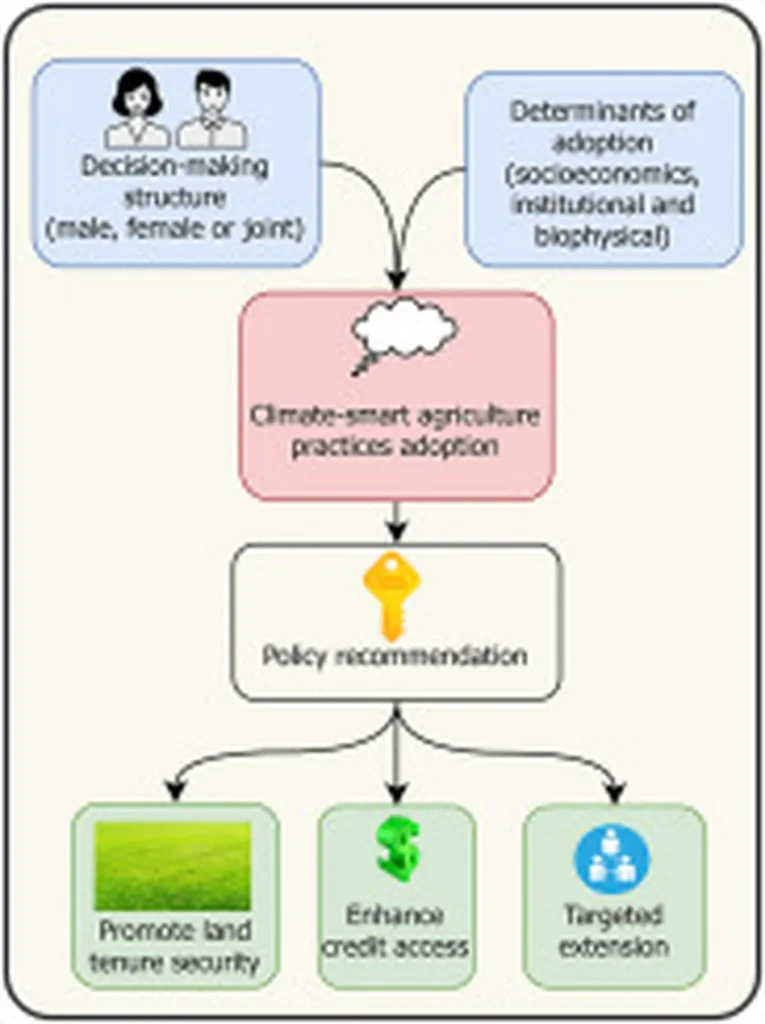In the arid landscapes of Baringo County, Kenya, smallholder livestock farmers are on the frontlines of climate change, grappling with erratic rainfall, droughts, and shifting grazing patterns. A recent study published in *Climate Smart Agriculture* (translated as “Climate-Smart Agriculture”) sheds light on the complex factors influencing the adoption of climate-resilient practices among these farmers, with a particular focus on the role of gender dynamics in decision-making. Led by Lucy C. Chepkochei of the University of Nairobi’s Department of Geospatial and Space Technology, the research offers critical insights that could reshape climate adaptation strategies in the region and beyond.
Chepkochei and her team surveyed 300 farmers across three sub-counties in Baringo, employing a multi-stage sampling technique to capture a diverse range of experiences. The study utilized an Ordered Probit Model to analyze the intensity of climate adaptation practices, categorizing households based on decision-making structures: male-dominated, female-dominated, joint, and pooled.
The findings reveal a nuanced picture of the determinants driving climate-smart agricultural practices. Education emerged as a key factor, with higher levels of education among household heads correlating with increased adoption of resilient practices. Proximity to markets and access to extension services also played significant roles, underscoring the importance of institutional support. Conversely, experiences of conflict, agro-pastoralism, and communal land ownership were found to hinder adoption.
However, the most compelling aspect of the study is the variation in these effects across different decision-making structures. “Our results show that gendered disparities in decision-making significantly influence the intensity of climate adaptation,” Chepkochei explains. “Households where decisions are made jointly or by women tend to adopt climate-smart practices more intensively than those dominated by men.” This finding highlights the critical need for policies that empower women and promote inclusive decision-making processes.
The implications of this research extend beyond Baringo County, offering valuable lessons for climate adaptation strategies in other regions. Policymakers are urged to implement tailored interventions, such as capacity-building initiatives, improved access to credit, and enhanced extension services, to foster inclusive climate adaptation. “By addressing these gendered disparities, we can enhance the resilience of smallholder livestock systems and ensure more equitable outcomes,” Chepkochei asserts.
As the world grapples with the escalating impacts of climate change, studies like Chepkochei’s provide a roadmap for more effective and inclusive adaptation strategies. By understanding and addressing the gendered dynamics of decision-making, we can unlock the potential for more resilient and sustainable agricultural systems. The research not only informs policy but also underscores the importance of integrating gender perspectives into climate adaptation efforts, paving the way for a more equitable and climate-resilient future.

